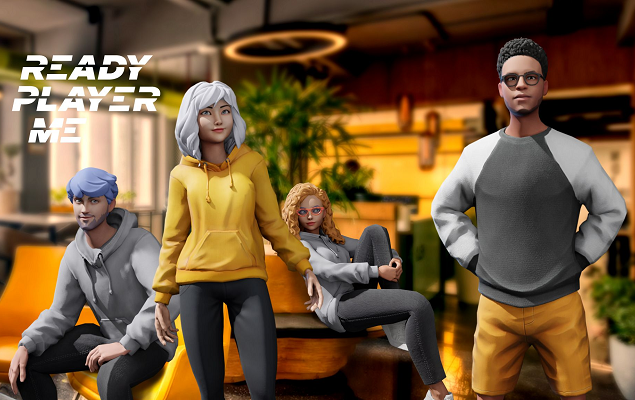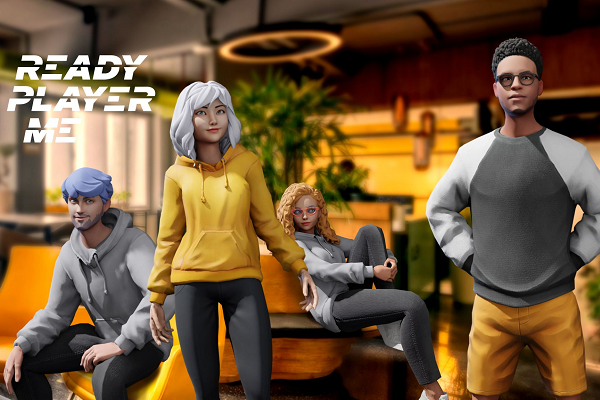Ready Player Me Raises $13M for Metaverse Virtual Human Creation
 Virtual human avatar generator Ready Player Me has closed a $13 million Series A funding round led by Taavet+Sten. Ready Player Me offers a platform for users to design a three-dimensional digital character for exploring the mushrooming virtual worlds of the metaverse.
Virtual human avatar generator Ready Player Me has closed a $13 million Series A funding round led by Taavet+Sten. Ready Player Me offers a platform for users to design a three-dimensional digital character for exploring the mushrooming virtual worlds of the metaverse.
Ready or Not
Ready Player Me provides tools for designing a custom avatar manually or sculpted out of uploaded photos. Once a user is satisfied with their virtual self, they can import it into more than 900 compatible metaverse games and apps, counting big brands like Warner Brothers and Dior among its partners. The company’s ambition is to serve as the de facto standard for the custom virtual humans inhabiting the metaverse and plans to leverage its new funding to accelerate adoption by more virtual worlds. That includes developing features that help developers monetize via the avatars using NFTs for selling in-game clothing and other items. Deadmau5 premiered his Head5 NFT collection with Ready Player Me as an early demonstration of the company’s plans.
“2021 has been a breakout year for Ready Player Me – our avatar platform adoption has grown from 25 to 900 companies,” Ready Player Me CEO Timmu Tõke said in a statement. “With the funding, we will scale our partner network further and will build out monetization tools for developers to help them make money with avatar customization assets and NFT’s. Our goal is to become the default system for the metaverse.”
Ready Player Me is technically a product of a company named Wolf3D. The platform and the company name are synonymous enough that Wolf3D isn’t even cited in the announcement, though Tõke’s title is CEO of Wolf3D on LinkedIn. Github co-founder Tom Preston-Werner, Konvoy Ventures, Samsung Next Ventures, and a couple of NFT influencers were some of the dozen or so investors in the new round with Taavet+Sten, led by Wise co-founder Taavet Hinrikus and Teleport co-founder Sten Tamkivi.
Metaverse Refrain
The explosion in metaverse-related products this year may seem mild, judging from what Ready Player Me and its mushrooming rivals plan for 2022 and beyond. The launch of MetaHuman Creator by Unreal February sparked a kind of arms race among voice and visual AI developers. Investors and clients are showering startups like Hour One, Supertone, Resemble AI, Veritone, and DeepBrain with cash and contracts. AI-powered versions of virtual humans have become an increasingly common sight worldwide. YouTube star Taryn Southern’s virtual clone, the story-telling virtual William Shatner, Nestle Toll House’s virtual “cookie coach” Ruth, and Sber’sRussian television host are just the leading edge.
Meta’s metaverse announcement and virtual office debut, Baidu’s new XiRang metaverse and Nvidia’s Omniverse showcase mean the tech giants aren’t ignoring this either. Nvidia created an entirely virtual version of CEO Jensen Huang to give a small part of a major speech at its conference earlier this year using its Audio2Face software first demonstrated at GTC last year as part of the Nvidia Jarvis AI. Audio2Face applies voice data to animate three-dimensional skin and muscles on a virtual face. It’s one of the hundreds of pre-trained models for Jarvis using Nvidia’s GPU technology.
“By giving people avatars that travel across virtual worlds, we can make the metaverse more connected,” Tõke said. The metaverse is not one place or platform, it’s a network of thousands of experiences.”
Follow @voicebotai Follow @erichschwartz
Facebook Opens Tests Horizon Workrooms for Virtual Human Offices









